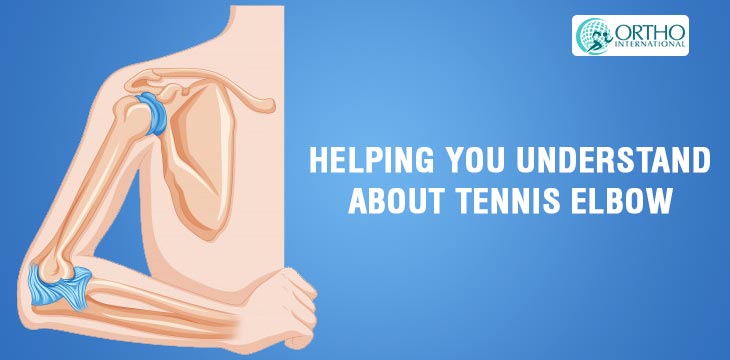Tennis elbow is precisely called lateral epicondylitis, is an ailment including the degeneration of a tendon’s attachment on the lateral part of the elbow. Modestly put, the degeneration creates pain. The pain may be inhabited on the outside of the elbow, and it can be delicate to the touch. This ailment can also cause pain throughout activity, particularly when grasping or uplifting things. Seldom, the pain will travel underneath the forearm and into the hand. Climbers and even people doing handstands are just as inclined to suffer from this ailment. It can occur to many players and even individuals who have comparatively inactive jobs, like writing and scrolling with a mouse on a computer.
When Can Tennis Elbow Occur?
Tennis elbow can happen with a broad range of exercises, not just tennis. A strong hit of the ball, a too-tight grip on the racket or the handling of an axe, bike bar, rowing device—an infinite number of elements—can all create an overstretching of the muscle. This sudden lengthening may guide to micro- or macro-tears of the crosslinks that connect the fibers, or even to the fibers themselves. The pain is originally caused by swelling at the tendon’s adjunct of the muscles that support the wrist. Over course, without analysis of the pain, the problem grows one more repellent to home administration. It is called tendinosis.
Why Tennis Elbow Prevails In Long Run?
Over time the body’s failure to deal with the initial swelling makes the body create different cells. Instead of inflammatory cells, the body creates a type of cells denominated as fibroblasts. When this occurs, the collagen drops its strength. It turns delicate and can break or be quickly damaged. Each time the collagen breaks down, the body reacts by forming a scar network in the tendon. Ultimately, the tendon becomes solidified from extra scar tissues. The tendon no longer functions properly and pain persists, often even in the absence of movement.
Indications And Signs Associated With Tennis Elbow
Some common symptoms of this ailment include sharp pain directly on the outside of the elbow with activity, throbbing in the forearm at rest and the delicacy of the grip. Actions such as typing, gripping, twisting out towels and in some situations simply raising a cup of coffee can be an unpleasant job. Eventually, to ascertain if this is the beginning of your elbow pain, one needs to meet a qualified medical professional (like us) for an accurate analysis.
Nevertheless, if it hurts to lift your wrist backward-facing resistance, and you have tenderness over the outside of the elbow when you press against the bone, you likely have this condition. Now that you know why you have pain on the outside of your elbow and why lifting your coffee isn’t as appealing as it once was, it is time to deal with it.
Treatment For Tennis Elbow
The classic method for tennis elbow treatment involves cortisone injections and has shown to relieve the pain in 50% of the cases. Cortisone hinders cell metabolism, further closing down the healing response. But it reduces pain by diminishing the inflammatory agents at the site of the damage.
Soft tissue massage to the injured area splits down scar tissue and spurs the generation of more collagen through a blend of cell stimulation and collagen fiber cycling. New collagen is deposited down at the site of the injury. If particular stress is applied the collagen fibers line up adjacent the lines of stress, heading to healthy healing of the network. If the joint is immobilized, still, scarring is more apt to form with weakened tissue as a result.
Reference
If you have any symptoms which is pointing towards tennis elbow, please consult Dr. Abhishek Mishra the best orthopedic surgeon in Delhi.
